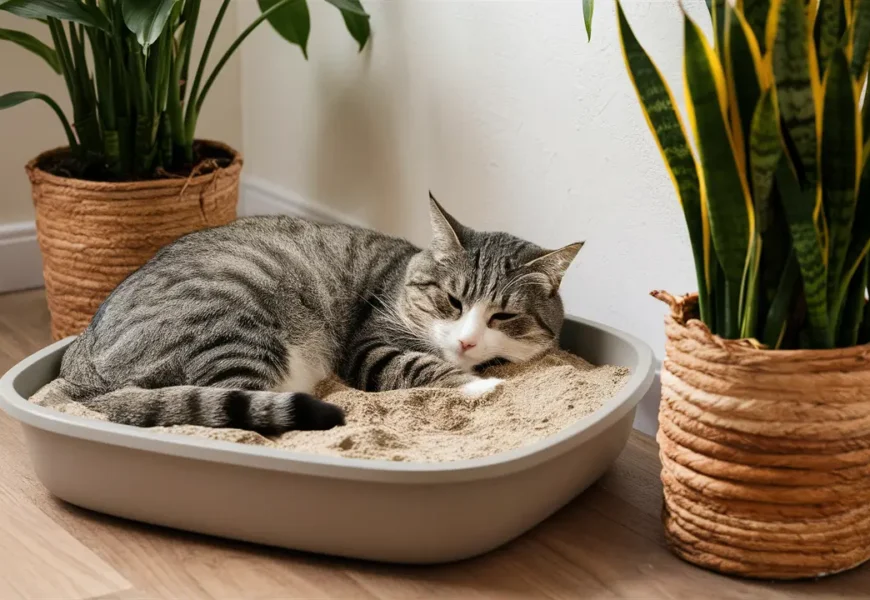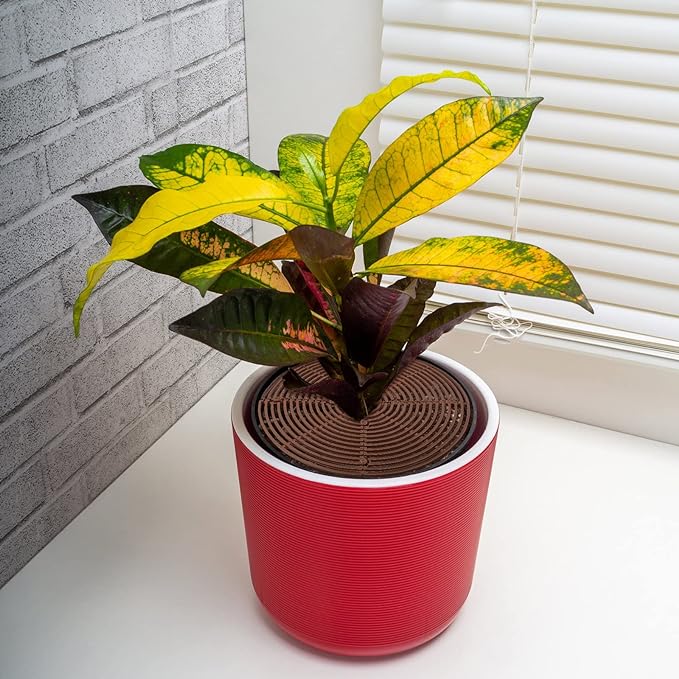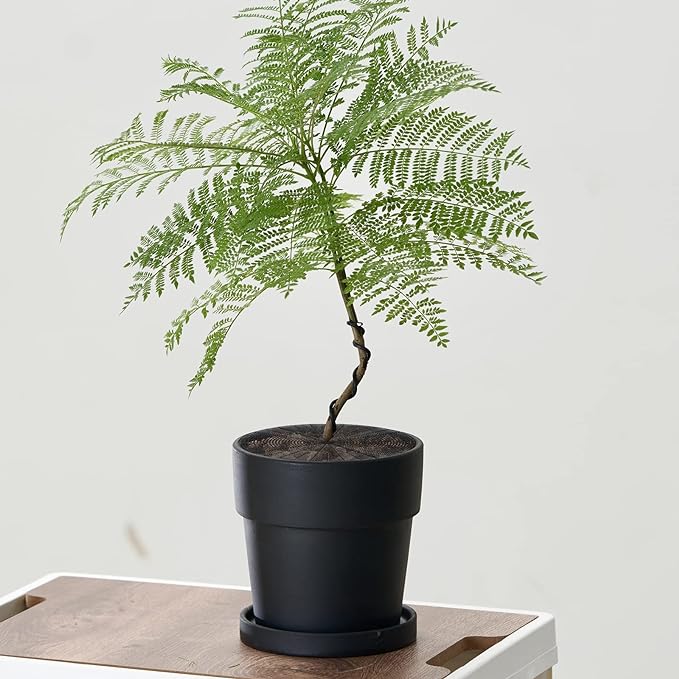Hey there, fellow plant enthusiasts! Are you constantly finding your beautiful houseplants rearranged, uprooted, or worse—completely destroyed—thanks to your cute cat? In this post, we will learn how to get your cat to stop digging in plants.
Let’s delve deeper into the fascinating world of feline behavior to uncover the reasons behind this seemingly inexplicable habit.
Table of Content
Disclosure:
This post may contain affiliate links. This means if you click on a link and make a purchase, Sproutfolk may receive a small commission at no additional cost to you. We only recommend products we believe in and that may be helpful to our readers.
Understanding the Behavior
Cats are complex creatures with unique behaviors that often leave their human very confused. When it comes to digging in plants, there’s more to it than what we see.
1. Instinctual Factors
At the core of a cat’s behavior lies its instinctual nature, shaped by centuries of evolution. Cats are natural-born hunters, hardwired to stalk, pounce, and dig.
This instinctual behavior served them well in the wild, allowing them to get food, mark territory, and bury waste.
2. Sensory Stimulation
Beyond their hunting instincts, cats are also highly sensory creatures. The texture and scent of soil hold a special allure for our friends, triggering a primal urge to explore and investigate.
The soft, malleable consistency of soil beneath their paws provides tactile satisfaction, while the earthy aroma stimulates their olfactory senses.
3. Territorial Marking
In addition to satisfying their sensory cravings, digging in plants can also serve as a form of territorial marking for cats. By digging and scratching at the soil, cats leave behind their scent, effectively claiming the area as their own.
This behavior is not only instinctual but also serves as a means of communication with other cats in the area.
4. Expression of Emotions
Like humans, cats experience a wide range of emotions, from joy and contentment to anxiety and stress. Digging in plants can be a manifestation of these emotions, serving as a coping mechanism for cats experiencing boredom, frustration, or anxiety.
In multi-cat households, digging may also be a form of social interaction or a means of asserting dominance.
5. Environmental Factors
External factors such as changes in the environment, household routines, or the introduction of new pets can also influence a cat’s behavior.
Cats are creatures of habit and thrive on routine and familiarity. Disruptions to their environment or routine can lead to stress and anxiety, prompting them to seek comfort in familiar behaviors such as digging in plants.
In summary, the behavior of digging in plants is a complex interplay of instinct, sensory stimulation, territorial instincts, emotional expression, and environmental factors.
By understanding the underlying reasons behind this behavior, we can better address it and implement effective strategies to redirect our feline friends’ energy towards more appropriate outlets.
Effective Strategies to Deter Digging
Now that we have a deeper understanding of why cats engage in the behavior of digging in plants, let’s explore some practical and effective strategies to discourage this habit and protect your greenery.
1. Provide Proper Distraction
Redirecting your cat’s energy towards more appropriate outlets can help curb their desire to dig in your plants.
- Interactive Toys: Keep your cat or dog engaged with a variety of interactive toys such as feather wands, laser pointers, or puzzle feeders. These toys not only provide mental and physical stimulation but also help channel your cat’s natural hunting instincts in a constructive manner.
- Scratching Posts: Invest in sturdy scratching posts or pads placed strategically around your home. Cats have a natural urge to scratch and dig, and providing them with suitable surfaces to do so can help prevent them from targeting your plants.
2. Create Unattractive Plant Environments
Making your plants less appealing to your cat can deter them from digging and exploring.

- Cover Soil: Place decorative rocks, pine cones, or aluminum foil over the soil surface of your plants. Cats dislike the texture of these materials and are less likely to engage in digging behavior when faced with an unappealing surface.
- Citrus Scent: Cats have a strong aversion to citrus scents. Sprinkle citrus peels around your plants or use citrus-scented sprays to create an unpleasant aroma that will deter your cat from digging.
3. Offer Alternative Digging Spaces
Providing your cat with designated digging areas can satisfy their natural instincts while preserving your plants.

- Cat-Friendly Gardens: Designate a specific area in your yard for your cat to dig, filled with loose soil or sand. Encourage your cat to use this space by burying treats or toys in the soil to make digging more rewarding.
- Indoor Sandbox: Create an indoor sandbox or large litter box filled with sand for your cat to dig in. Place it in a quiet, accessible location and encourage your cat to use it by burying toys or treats in the sand to stimulate their interest.
Protect your potted plants with our durable ABS plastic grid set. Easily adjustable sizes and simple installation keep your space clean and tidy.
4. Utilize Repellents
In some cases, using repellents can be an effective deterrent to discourage your cat from digging in your plants.
- Commercial Sprays: Consider using commercial repellents specifically formulated to discourage cats from digging. These sprays often contain natural ingredients that are safe for both your cat and your plants. Follow the manufacturer’s instructions carefully when applying these products.
- Natural Deterrents: Create homemade repellents using ingredients such as vinegar, cayenne pepper, or coffee grounds. Simply spray or sprinkle these deterrents around your plants to create an unpleasant scent or taste that will discourage your cat from digging.
By implementing these strategies and providing your cat with appropriate outlets for their natural instincts, you can effectively deter them from digging in your plants and maintain a harmonious environment for both you and your furry friend.
Protect your plants with our versatile pot grid set. Easily adjustable, sturdy plastic covers with stakes for secure fitting. Keep soil in place while maintaining a clean, seamless look.
FAQs
Q: Is it safe to use commercial repellents around my plants?
A: Yes, most commercial repellents are safe for plants when used as directed. However, always check the product label and consider natural alternatives if you have concerns.
Q: My cat still insists on digging despite my efforts. What should I do?
A: Patience is key! It may take time for your cat to adjust to the new deterrents. Stay consistent with your methods and consider consulting a veterinarian or animal behaviorist for further guidance.
Q: Can I use double-sided tape to deter my cat from digging?
A: While double-sided tape may deter some cats, others may not be bothered by it. Experiment with different deterrents to find what works best for your furry friend.
Conclusion
Don’t let your cat’s digging tendencies ruin your indoor jungle! With a little patience, creativity, and the right strategies in place, you can train your furry companion to leave your plants alone. Remember, understanding your cat’s behavior is the first step towards fostering a harmonious environment where both your greenery and your pet can thrive. So go ahead, implement these tips, and reclaim your plant paradise today!

















